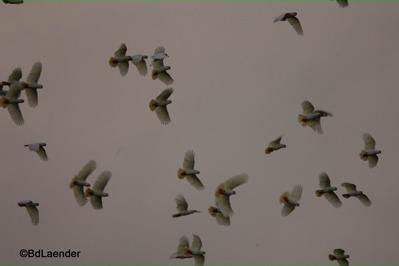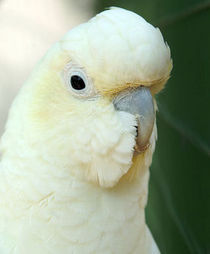

"The cockatoo and the community: ten years of Philippine Cockatoo Conservation Programme." BirdingAsia 10 (2008): 23–29. 1 2 3 Peter and Indira Lacerna Widmann.International Union for Conservation of Nature. The species is very adaptable and even forages on crops, particularly rice, when half-ripe, and corn, hence becoming regarded a pest. They feed on seeds, and, to a lesser extent, on fruits, flowers, buds and nectar. The red-vented cockatoo is a social species which roosts, feeds, and flies in noisy groups but during the mating season, from March to July, pairs live apart from the flock. Other contributing factors are loss of coastal habitat and persecution as an agricultural pest. US$160 in Manila in 1997) means that chicks are taken from virtually every accessible nest. Populations have decreased dramatically due to illegal trapping for the cage-bird trade. Ī captive population is bred by Antonio de Dios's Birds International near Manila. Environmental organizations like the Katala Foundation or Rainforest Rescue are trying to prevent the construction. The efforts for conservation of the Katala Foundation are threatened by plans to build a coal-fired power station on Palawan's coast. There are around 180 found in wilderness conservation in the municipality of Narra and Puerto Princesa, Palawan, particularly in Rasa Island. The species stronghold is the Palawan Faunal Region where the Katala Foundation has been running the Philippine cockatoo Conservation Programme since 1998. Now remnant populations exist on the islands of Palawan, Tawitawi, Mindanao and Masbate.

However, by 2008 this was reduced to probably less than 1000. In the early 1990s the total wild population was estimated at 1000–4000. Red-vented cockatoos were formerly widely distributed on all larger and many smaller islands of the Philippines, excluding northern and central Luzon.

It is quieter than most cockatoos, and much quieter than the umbrella cockatoo or Moluccan cockatoo. The red-vented cockatoo makes a characteristic bleating call, as well as screeching or whistling noises that are common to most cockatoos. It is 12 inches (30 cm) long and has an 8.6-inch (22 cm) wingspan. The plumage is all white with red undertail coverts tipped white, yellowish undertail and pale yellow underwings.


 0 kommentar(er)
0 kommentar(er)
